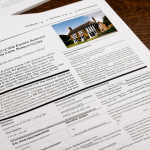Summary of Stamp Duty Changes in England and Northern Ireland
Recent stamp duty changes in England and Northern Ireland introduce significant updates impacting homebuyers across various segments. The recent reforms aim to simplify the tax bands and adjust thresholds to reflect today’s housing market, offering both benefits and challenges depending on property values and buyer status.
One key difference from previous rules is the elevation of threshold limits before stamp duty applies, which can reduce upfront costs for many buyers. However, higher rates now apply to some price brackets, affecting those purchasing more expensive homes or additional properties. This nuanced balance addresses affordability without sacrificing government revenue.
This might interest you : Unearthing lucrative prospects: expert roi strategies for uk property investors
Official statements highlight the reforms’ intention to further stimulate the housing market, while expert insights emphasize the importance for buyers to understand how these changes affect their purchasing power. For example, first-time buyers may experience relief through increased thresholds, but investors and second-home owners might face steeper rates.
Understanding these nuanced stamp duty changes is crucial for anyone navigating property purchases in England or Northern Ireland today. Being informed enables more strategic decision-making and maximizes financial efficiency within the current regulatory landscape.
Also read : Mastering today’s uk commercial property market: key strategies for success
Updated Stamp Duty Rates and Thresholds
Understanding the stamp duty rates and thresholds updated in 2024 is crucial for homebuyers in England and Northern Ireland. The recent reforms introduce new tax bands designed to align more closely with current property values, impacting overall costs.
For properties up to £250,000, no stamp duty is payable, maintaining a relief for many first-time and traditional buyers. Between £250,001 and £925,000, a 5% rate now applies where previously lower rates existed. Above this, rates escalate progressively, reaching 12% for properties exceeding £1.5 million. These adjustments represent a shift from prior brackets, tightening revenue collection on higher-value homes.
For instance, a buyer purchasing a home at £600,000 will now pay more stamp duty compared to previous rules, while someone buying a £200,000 home remains exempt. This ensures that buyers of lower-cost homes benefit through threshold expansions, whereas those purchasing luxury or investment properties face increased charges.
Comparing the old and new rates highlights a steeper curve in tax liability, which directly affects budgeting and financial planning. Buyers should assess how these thresholds impact their intended property purchase to avoid unexpected expenses when completing transactions in England and Northern Ireland under the 2024 updates.
Who Is Affected by the Changes
The stamp duty changes impact several distinct groups of homebuyers, each facing different financial implications across England and Northern Ireland. Primarily, first-time buyers benefit from enhanced thresholds that reduce or eliminate stamp duty on properties up to £425,000, making first-home purchases more accessible. This expanded relief lowers initial costs, encouraging new entrants to the property market.
Conversely, second-home owners and property investors find themselves subject to higher surcharge rates under the recent reforms. The additional 3% on top of the standard stamp duty rates particularly affects buy-to-let investors and those purchasing holiday homes, raising acquisition costs significantly. Moreover, these groups have little exemption compared to first-time buyers, signaling a targeted approach to curb speculative buying.
Geographically, the reforms apply uniformly across England and Northern Ireland, although regional property value variations mean the practical impact differs. Urban areas with higher price points may see more homeowners affected by steepened tax bands.
The government has introduced a transition period allowing purchasers to adapt. Eligibility criteria and payment deadlines remain critical to understand. Homebuyers should review their status to assess liability and utilise available concessions effectively under the 2024 changes.
Implications for First-Time Buyers
The recent reforms bring enhanced first-time buyer relief in England and Northern Ireland, raising the nil-rate threshold to £425,000. This means many buying their first home enjoy exemption from stamp duty up to this value, significantly reducing initial purchase costs. For properties priced between £425,001 and £625,000, a tapered rate applies, ensuring relief extends partially beyond the threshold.
This expansion directly addresses affordability concerns for new entrants into the market. For example, a first-time buyer purchasing a home at £400,000 pays no stamp duty, whereas previously, some amount would have been due. However, buyers purchasing above £625,000 receive no relief and must pay standard rates plus the applicable surcharge if relevant.
To maximise the benefit, first-time buyers must ensure they meet eligibility criteria, including proof they have never owned a home before and that the purchase is intended as their sole residence. The relief is available only on residential properties purchased as a primary home.
Government statements underline this measure as part of a wider effort to support first-home ownership amid rising prices. Expert advice encourages buyers to plan finances accordingly, considering that stamp duty changes can substantially impact upfront affordability and overall homebuyer budgets in the current market climate.
Impact on Existing Homeowners and Property Investors
The recent reforms in stamp duty changes notably affect existing homeowners and property investors in England and Northern Ireland. Homeowners seeking to move up or down the property ladder now face altered tax liabilities, especially when purchasing higher-value properties or additional residences. The increased stamp duty rates on properties above £925,000 directly impact those upgrading to more expensive homes, potentially requiring more upfront budgeting.
For property investors and landlords, the reforms introduce a steeper additional surcharge of 3% on top of standard rates for buy-to-let and second-home purchases. This increases acquisition costs significantly, discouraging speculative buying and encouraging more prudent investment strategies. Investors must carefully consider these higher costs when calculating returns on buy-to-let properties.
Planning becomes essential; affected parties should evaluate the timing of purchases to optimise tax liability under the phased transition rules. Consulting financial advisors and using detailed cost forecasting can help mitigate surprises. Understanding the stamp duty changes equips existing homeowners and investors to make informed decisions, aligning property acquisition plans with the updated regulations across England and Northern Ireland.
Summary of Stamp Duty Changes in England and Northern Ireland
The recent reforms to stamp duty in England and Northern Ireland introduce a more progressive structure aimed at balancing market stimulation with fiscal demands. The key update involves raising the tax-free threshold to £250,000 for standard buyers, which directly benefits many homebuyers by reducing initial costs. However, higher rates beyond this threshold create sharper increases in tax liability for more expensive properties.
Compared to previous rules, the reforms simplify tax bands but increase rates for properties valued over £925,000, reflecting government efforts to target high-value purchases without deterring traditional buyers. Notably, the additional 3% surcharge on second homes and buy-to-let properties remains, reinforcing the focus on curbing speculative investment.
Official government statements emphasize that these stamp duty changes intend to support first-time buyers and encourage market activity while maintaining revenue streams. Expert analysts note the importance of understanding how individual circumstances, such as buyer status and property price, affect tax obligations. This nuanced approach requires homebuyers to carefully evaluate their position amid evolving market dynamics across both regions.
By recognizing the differences from past regulations and the underlying policy reasons, buyers can better navigate the financial implications of these recent reforms.







